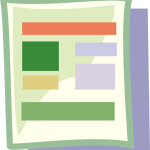It is important to get the business letter format correct because if you are writing from a business then your letter reflects the company, and if you are writing to a business then your letter reflects your professionalism. To start of, the first thing you will decide is which of the following types of format to use in your business letter:
- Full Block Style: everything is lined-up to the left hand margin, no indenting at all, single space except for between paragraphs, the most easiest format to use
- Modified Block Style: includes centering certain parts of your letter (date and closing parts), single spacing
- Semi-Block Style: least common format, includes indenting of paragraphs and centering like in modified block style, sometimes spacing is bigger
Make sure you understand the different types of business letter there are and can see the difference between business letter vs formal letter, business letter vs business memo and formal letter vs informal letter. The most important thing to remember is to remain consistent when writing exchanges. If you are writing a business letter on behalf of a company then check which is their preferred style. If you are writing yourself, make sure to choose a format and stick to it.
How to Write a Business Letter
As with any other letter, a business letter consists of certain parts that need to be included in the layout. Have a look at some advice for writing a business letter that will give more detail on how to come across as professional and what to avoid doing. These are the basic guidelines for writing a business letter:
- Letterhead: of company, formal, check before writing what the company norms are, usually included for more formal and official letters
- Addresses: at the top of the page, writer´s address always comes first followed by recipient address
- Date: mark the date the letter was written
- Salutations: formal addressing at beginning and greeting at the end, for more details visit business letter salutations
- Main body: details on who you are and why you are writing, what you want to achieve, if you are writing on behalf of someone else, background information, supporting details (all content dependent on purpose)
- Closing: appropriate end to the letter, salutation, signature and printed name
- Enclosures: attach any extra documents and state in the letter as well what is being attached
Remember to keep everything concise and organised. Your language should remain formal and polite because you want to leave a good impression on the recipient of the business letter.
View our business letter samples.
-- Publicidad --
